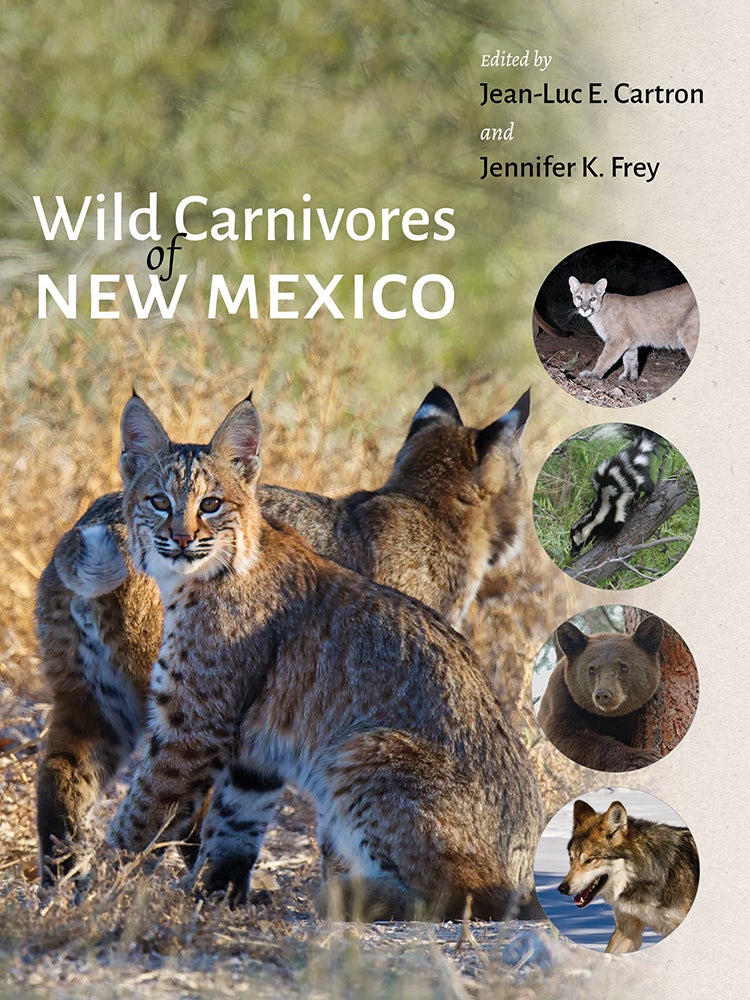Wild Carnivores of New Mexico
DBS&A Biologist and National Environmental Policy Act (NEPA) team leader Jean-Luc E. Cartron, PhD, recently completed the landmark study of New Mexico’s wild carnivores, published by University of New Mexico Press. Co-edited by Jennifer K. Frey, and sponsored by DBS&A, Wild Carnivores of New Mexico explores the animals and major issues that shape their continued presence in the state and region. Topics covered include habitat, ecosystems, and behavior and range, and provides details on distribution, habitat associations, life history, population status, management, and conservation needs of individual carnivore species. The book has been in development for more than 12 years, its concept in part motivated by Dr. Cartron’s nocturnal encounter of a mountain lion and her three full-grown cubs in Sugarite Canyon in spring 2008.
According to UNM Press, “Like Cartron’s award-winning Raptors of New Mexico, Wild Carnivores of New Mexico shares the same emphasis on scientific rigor and thoroughness, high readability, and visual appeal. Each chapter is illustrated with numerous color photographs to help readers visualize unique morphological or life-history traits, habitat, research techniques, and management and conservation issues.”
Contributors
Jean-Luc E. Cartron is a research professor of biology at the University of New Mexico. He is the author of Raptors of New Mexico as well as a coauthor of A Field Guide to the Plants and Animals of the Middle Rio Grande Bosque (both from UNM Press).
Jennifer K. Frey is a professor of mammalian ecology in the Department of Fish, Wildlife, and Conservation Ecology at New Mexico State University. She has more than thirty years of experience conducting research on the ecology and conservation of mammals in New Mexico and has published more than ninety scientific articles. She especially enjoys conducting research on rare and poorly studied species. She provides scientifically robust research that informs conservation and management.

